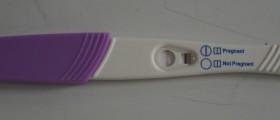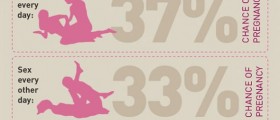
Ovulation is the process during which a mature ovarian follicle ruptures and releases an ovum. Ovulation is a part of menstrual cycle of major importance for getting pregnant. Once the mature egg is released it can be fertilized by sperm and implanted into the uterus. In case an egg is not fertilized it is together with superficial layer of the uterus removed during menstrual bleeding.
Cramping during Ovulation
Ovulation can be totally asymptomatic. In this case a woman is not even aware she is ovulating. This ovulation can be only confirmed by measuring the basal temperature and several more methods. On the other hand, some women may know when they are ovulating since they may feel the process of ovulation in a form of cramping. So, cramping can be the actual symptom of ovulation. Duration as well as intensity of cramping during ovulation generally differs from one woman to the other. Cramping is localized in the lower portion of the abdomen and affects either side of the pelvis. It may last a minute or extent to 48 hours. The pattern of cramping varies a lot. Since only one ovary releases an egg during one menstrual cycle cramping may switch sides and depend on the ovary engaged in the process of ovulation.
Why does Cramping during Ovulation Occur?
The actual cause of cramping during ovulation has not been identified yet but there are several thesis.
The first one is connected to the very follicle. The ovaries normally produce approximately 20 follicles. Each of them contain an immature ovum. Only one of these eggs will fully mature and eventually be released. The stretching of the follicle caused by the growth and maturation of the ovum may be responsible for cramping during ovulation. Furthermore, after an egg has fully matured the ovum is released from the follicle. The very process involves bleeding of the burst follicle and the blood ends up in the peritoneum. Even though there is a small amount of blood it can irritate the peritoneum and cause cramping. And finally, the very rupture of the follicle can be accompanied by short-term cramping.
It is estimated that around 25% of all women actually experience some kind of pain during the process of ovulation.
Any kind of lower abdominal pain must be reported. Apart from cramping caused by ovulation, the pain and discomfort in the lower abdomen may originate from other gynecological illnesses such as endometriosis, chronic pelvic inflammatory disease, salpingitis and ovarian cysts. This is why a woman should not neglect the symptoms and is supposed to pay a visit to her gynecologist as soon as possible.
















Your thoughts on this
Loading...